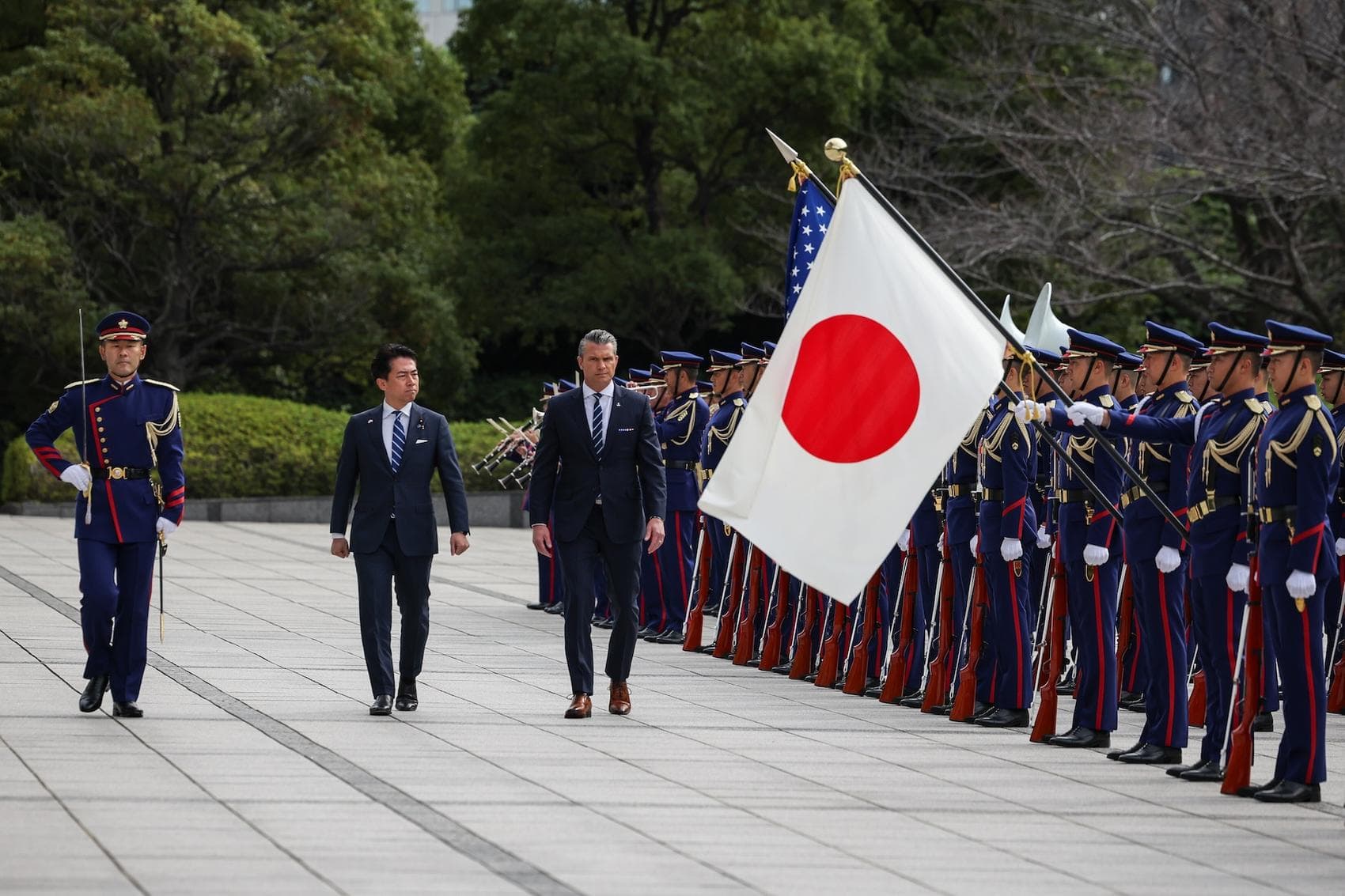Prime Minister Sanae Takaichi and U.S. President Donald Trump refrained from engaging in detailed discussions about Japan's defense spending during their first summit on Tuesday, but Washington is expected to press Tokyo to shoulder more of the burden in the near future.
The summit in Tokyo came days after Takaichi, who became Japan's first female leader last week, pledged in her first parliamentary speech Friday to raise defense spending to 2 percent of gross domestic product by March, two years ahead of the previous target.
Security experts say Takaichi needs to demonstrate her commitment by not only voluntarily expanding the defense budget but also outlining her vision for the Japan-U.S. alliance in an increasingly severe security environment.
Takaichi, who succeeded Shigeru Ishiba, is viewed as a fiscal dove and a staunch conservative with hawkish views on diplomacy and security shaped by her relationship with the late Prime Minister Shinzo Abe. She has expressed a willingness to strengthen Japan's defense capabilities.
Abe, who was fatally shot while making a campaign speech in 2022, built a close personal relationship with Trump during his first four-year presidential term that began in 2017. On Tuesday, Takaichi attempted to bond with Trump over their shared admiration for the slain leader.
Japan's defense spending was apparently discussed at Tuesday's summit, with Takaichi telling reporters after the meeting that she conveyed Tokyo's"determination" to keep raising defense spending "proactively," but neither side mentioned specific figures.
"I am convinced that I can take the Japan-U.S. alliance to new heights with President Trump," the 64-year-old said.
Yasuhiro Kawakami, director and senior research fellow at the Tokyo-based Sasakawa Peace Foundation, said Trump may have refrained from discussing specific figures so as not to yet"put pressure" on Japan.
With Trump set to meet Chinese President Xi Jinping later this week in South Korea,"I think they needed to prioritize showing a strong and unified Japan-U.S. alliance," Kawakami said.
On Wednesday, Defense Minister Shinjiro Koizumi held talks with his U.S. counterpart Pete Hegseth, who accompanied Trump on the visit, and told a joint press conference afterward that he detailed Japan's plan to bring forward the defense spending goal of 2 percent of GDP.
Asked by a reporter if he expressed a desire for Japan to achieve specific numerical targets, Hegseth said,"There were certainly no demands placed on Japan."
In 2022, Japan decided to earmark 43 trillion yen ($283 billion) over five years through fiscal 2027 to reach the 2 percent benchmark, aligning with the standard of the time among NATO members, due to security challenges posed by China, North Korea and Russia.
The amount includes"defense-related" costs, consisting of spending on Japan's Coast Guard, United Nations peacekeeping operations and cybersecurity development.
For decades, Japan had capped its annual defense budget at about 1 percent of GDP, or roughly 5 trillion yen, reflecting its postwar pacifist stance under its war-renouncing Constitution.
To fund its 43 trillion yen commitment, the government approved hikes in income, corporate and tobacco taxes, despite its debt burden, which has topped 1,300 trillion yen -- more than twice the nation's GDP.
The Defense Ministry said in April that related outlays will bring the initial defense budget for fiscal 2025 to 9.9 trillion yen, equivalent to 1.8 percent of GDP three years earlier, demonstrating the steady progress the government is making toward its target.
Trump returned to the White House touting his"America First" mantra in January. Fearing changed priorities in Washington, NATO members in June set a new target of spending 5 percent of GDP on defense by 2035, including 1.5 percent on military-related infrastructure such as ports, airfields and bridges.
Trump's administration has quietly proposed that Japan boost its defense spending to 3.5 percent of its GDP, said a diplomatic source.
Tetsuo Kotani, a professor at Meikai University, said it is"almost certain" that Trump's administration will ask Japan to spend 5 percent of GDP on defense in the future.
But Kotani said Takaichi showed eagerness to address the defense spending issue by expressing her intention to advance the 2 percent goal"before receiving a formal request by Trump's administration."
Takaichi is also likely to want to head off domestic criticism by framing the decision as one that Japan made "voluntarily," rather than in response to a U.S. demand, Kotani, an international security expert, said.
The size of Japan's economy, especially compared to those of many NATO members, means such a level of defense spending would allow the nation to defend itself, he said.
"This suggests that U.S. Forces Japan could become unnecessary, and that it may be possible to fundamentally change the raison d'etre of the alliance. Therefore, the future of the alliance should be discussed first," Kotani said.
Kawakami believes Trump has high expectations for Takaichi to govern in the mold of Abe, and for Japan to become capable of"realizing regional stability and peace on its own, instead of completely relying on the United States."
© KYODO

